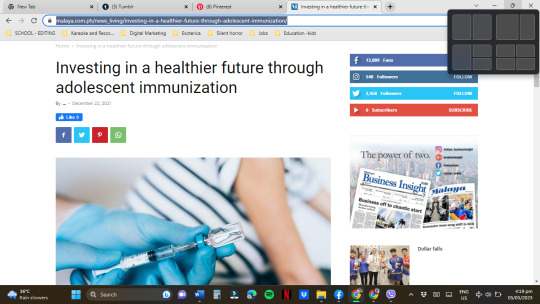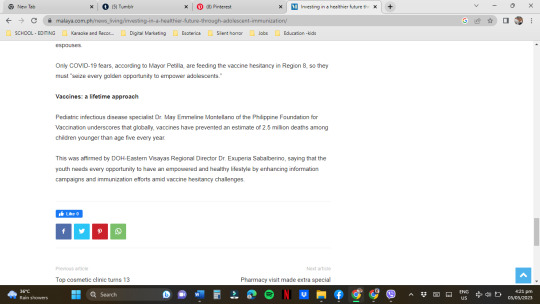#vaccine hesitancy
Text

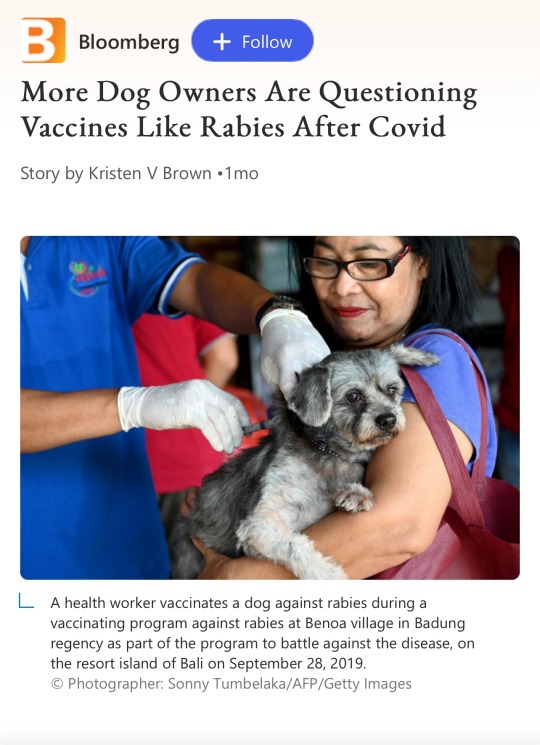
Istg, if I ever get rabies because some dumb ass antivaxxer refused to vaccinate their dog, I’ll probably be doing the rest of my blogging from prison because I promise you, Imma curbstomp the shit out of the owner
#politics#republicans#antivaxxers#rabies#dogs#vaccine skepticism#vaccine hesitancy#animal abuse#pets
28K notes
·
View notes
Text





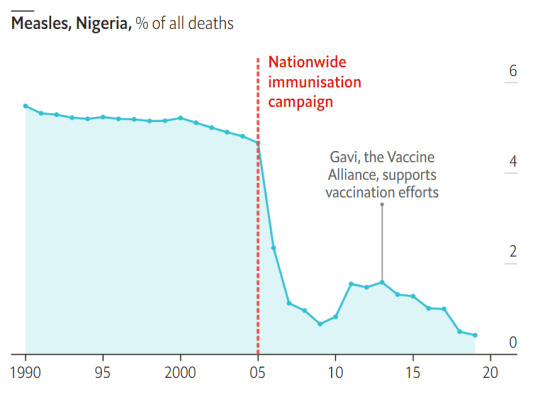

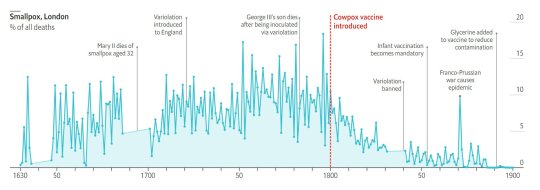

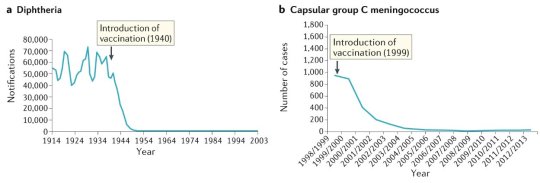




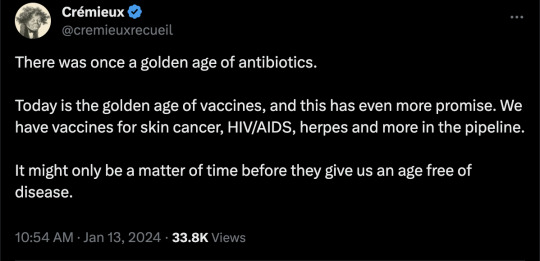
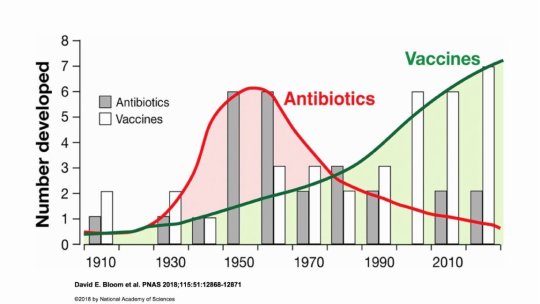

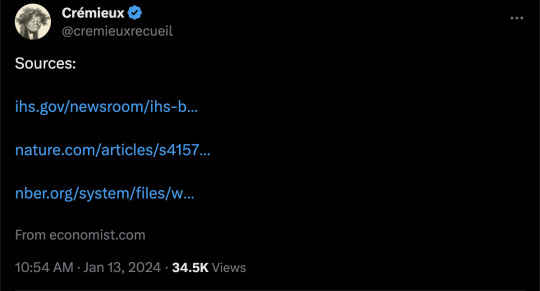

#vaccines#polio#measles#smallpox#diphtheria#meningococcal meningitis#haemophilus influenzae type B#pertussis#vaccine hesitancy#anti vaxxers#anti vax movement#antivaxers#COVID vaccine#anti vaccination#anti vaccine#science#medicine#religion is a mental illness#immunology
250 notes
·
View notes
Text
Republicans are soft on disease control. We all remember the MAGA anti-vaccine hysteria when the COVID-19 vaccines became available.
They are now turning their attention to the polio vaccine which was approved for use in the US on 12 April 1955. The number of polio cases in the US dropped from 57,879 in 1952 to 910 in 1962 and became rare by the early 1970s.
Thanks to anti-vaxxing conspiracy crackpots, polio returned to the US for the first time in three decades in 2022.
New Hampshire Republicans want to weaken vaccination requirements to kowtow to anti-science elements in their state.
New Hampshire could soon beat Florida—known for its anti-vaccine Surgeon General—when it comes to loosening vaccine requirements. A first-in-the-nation bill that’s already passed New Hampshire’s state House, sponsored only by Republican legislators, would end the requirement for parents enrolling kids in childcare to provide documentation of polio and measles vaccination. New Hampshire would be the only state in the US to have such a law, although many states allow religious exemptions to vaccine requirements.
Currently, Republicans control New Hampshire’s state House, Senate and governor’s office—but that isn’t a guarantee that the bill will be signed into law, with GOP Gov. Chris Sununu seemingly flip-flopping when it comes to disease control. Sununu did sign a bill in 2021 allowing people to use public places and services even if they did not receive the Covid-19 vaccine. But the next year, the governor vetoed a bill that would bar schools from implementing mask mandates.
The polio vaccine, first offered in 1955, and the MMR shot, which treats the highly infectious measles, mumps, and rubella viruses, are two very crucial vaccines both in the US and internationally. Since the year 2000 alone, vaccines against measles are estimated to have saved over 55 million lives around the world.
[ ... ]
Vaccine hesitancy is rising among parents of young children. A 2023 survey from the Pew Research Center found that around half of parents with kids four or younger thought that not all standard childhood vaccines—a list that also includes hepatitis B, rotavirus, DTaP and chickenpox—may be necessary. Anti-vaccine misinformation plays a role in this phenomenon, which began before the Covid-19 pandemic, but has certainly increased since. In a 2019 UK report, about 50 percent of parents of young kids encountered false information about vaccines on social media.
Gov. Chris Sununu is a spineless putz. In some ways he's like Lindsey Graham who likes to send smoke signals of independent thinking but always comes crawling home to Daddy Donald.
Sununu campaigned for Nikki Haley and blamed Trump for January 6th. But that hasn't stopped him from endorsing Trump anyway. Instigating a coup d'état does not disqualify somebody from the presidency in Sununu's opinion.
GOP's Chris Sununu tries, fails to defend his Trump endorsement
Sununu may do for polio in New Hampshire what Trump did for COVID in the entire US in 2020.
#new hampshire#polio#polio vaccine#poliomyelitis#anti-vaxxers#vaccine hesitancy#chris sununu#flip-flopper#republicans#contagious diseases#vaccine disinformation#public health#vaccination requirements#pandemics#measles#mmr#covid-19#donald trump#election 2024#vote blue no matter who
9 notes
·
View notes
Text
Marabito considers the current vaccination guidelines "excessive." She's one of many pet owners with "canine vaccine hesitancy," a phrase coined in a recent study led by the Boston University School of Public Health and published in the journal Vaccine. The study found that 53% of U.S. dog owners surveyed question whether the rabies vaccine is safe, whether it works, or whether it's useful. […] Marabito has never seen a rabid animal, so she says she considers the risk of rabies to be low.
We're not going to make it are we
6 notes
·
View notes
Text
A new study looks at excess deaths by partisan affiliation in two states during the pandemic.
Since the early days of the COVID-19 pandemic, public health officials have warned that some of us are at higher risk of severe outcomes from the virus, due to factors such as age or preexisting medical conditions.
The new research points to another factor that puts people at greater risk of dying from COVID-19: party affiliation.
The study finds that excess deaths during the pandemic were 76% higher among Republicans than Democrats in two states, Ohio and Florida.
What’s more, the partisan gap in death rates increased significantly after vaccines were introduced.
The research was conducted by Yale University School of Management’s Paul Goldsmith-Pinkham and Jacob Wallace and Jason L. Schwartz of the Yale School of Public Health.
To Goldsmith-Pinkham, the sharp divergence in excess death rates that emerged in the post-vaccine period “is pretty striking… and the magnitudes are quite large.” While the research doesn’t definitively prove that low vaccine uptake among Republicans explains the mortality gap, “it points to this as a potential mechanism.”
The question of whether and how much party affiliation affects COVID-19 outcomes has been widely debated among public health scholars and isn’t easy to answer. Some research has found that the death toll from COVID-19 has been higher in red counties than blue ones, but analyzing data at the county level makes it hard to be sure that party alone explains the differences. It’s theoretically possible that other factors about those counties, such as weather or average household size or availability of health care, could be more significant contributors to the death rate than how they voted.
Goldsmith-Pinkham and his coauthors decided to take a different approach that would avoid these pitfalls. They gathered nearly 600,000 Ohio and Florida death records from 2018 to 2021 and matched those records to voter registration data from 2017. This allowed them to determine the party affiliation of each person who died.
Then, they used data from 2019 as a benchmark to determine expected death rates based on age, time of year, location, and party affiliation. In other words, they calculated how many Republicans and Democrats in a given age bracket and a given county would normally die in a given season. Anything above or below that 2019 “normal” was considered an “excess death.”
The excess death framework had two important strengths: It allowed the researchers to study the effects of political party at an individual rather than geographic level, and it provided a built-in means of accounting for differences of age and location.
When the researchers looked at excess deaths before and after the pandemic, the results were sobering. Tragically, but not surprisingly, both Republicans and Democrats experienced a sudden uptick in mortality during the first year of the pandemic. While excess death rates were slightly higher among Republicans than Democrats, “both are dying at really high rates over this period,” Goldsmith-Pinkham says.
The fates of Republicans and Democrats began to diverge markedly after the introduction of vaccines in April of 2021. Between March 2020 and March 2021, excess death rates for Republicans were 1.6 percentage points higher than for Democrats. After April 2021, the gap widened to 10.6 percentage points.
Does this mean that differing vaccine uptake levels between Republicans and Democrats caused the mortality gap? Goldsmith-Pinkham says this study alone doesn’t prove that’s the case. However, he believes it does offer “pretty good evidence” that vaccines are at least an important part of the story.
And if indeed that’s the case, it suggests that policy makers should be looking at vaccine-promoting interventions specifically targeted at Republicans, Goldsmith-Pinkham says: “It gives you a sense of where you should be looking and who you should be targeting if you want to solve some of these problems.”
#us politics#news#futurity#2022#COVID-19#coronavirus#coronavirus pandemic#covid vaccine#coronavirus vaccine#Republicans#democrats#death rate#yale university#vaccine hesitancy
25 notes
·
View notes
Quote
I cannot underscore enough how much ‘vaccine hesitancy’ was frequently a solvable problem invoked as an excuse for institutional incompetency or unwillingness to do hard work. Or easy work.
We do not call it ‘free-money hesitancy’ when you need to explain to students how Pell Grants work, patiently walk them through the application process for financial aid, and reassure them that the offer really is as good as it sounds, even if they come from a socioeconomic background where nobody, and certainly nobody with a graduate education, has ever given them anything with no strings attached.
The story of VaccinateCA
12 notes
·
View notes
Text
3 notes
·
View notes
Text
First of all, let me state for the record that Glenn Greenwald and Jimmy Dore are not antivaxxers. What they do is even worse: They monetize vaccine hesitancy, legitimizing and reinforcing it, thereby doing their part to prolong a COVID-19 pandemic rapidly approaching its second birthday, after 5.3 million lives lost and countless more ruined.
They do it in a particularly sneaky fashion. They don’t advise against vaccination per se, and even insist they’re pro-vaccination and vaccinated themselves. But they strongly denounce vaccine mandates as tyranny and critics of antivaxxers as heartless meanies, sympathizing with the reluctance to getting vaccinated among those who just can’t stand putting a vaccine in their bodies, reassuring them that their fear is fair and their refusal is reasonable and presenting simplistic libertarian arguments that reduce vaccination purely to a matter of personal choice, as if other people have no stake in the matter.
It’s impossible to gauge how much of an impact they have on people choosing whether or not to get vaccinated. What is clear, however, is that their huge social media followings – including Greenwald’s 1.7 million on Twitter and Dore’s 916,000 on YouTube – owe a significant portion of their growth to their relentless pandering to vaccine-hesitant people, especially those on the far right, who in addition to helping them grow their fanbases are also willing to help them grow their incomes.
They could use that enormous reach to disseminate accurate information about vaccines and urge people to take them, helping public health officials and experts constructively address the misinformation, mistrust and – in some cases – selfishness that conspire to feed vaccine hesitancy. But instead of helping combat vaccine hesitancy, Greenwald, Dore and others like them milk it for fame and fortune.
—The People Monetizing Vaccine Hesitancy: Glenn Greenwald and Jimmy Dore are not antivaxxers. They're worse.
#politics#antivaxxers#glenn greenwald#jimmy dore#libertarians#republicans#coronavirus#covid-19#vaccine hesitancy
24 notes
·
View notes
Text
#vaccine#covid vaccine#vaccine damage#vaccine injury#vaccine deaths#vaccine mandates#vaccination#vaccine hesitancy
0 notes
Text
You Can't Blame Everything on Covid-19
Measles has made an unwelcome return to the U.S., with dozens of children across multiple states having caught the highly contagious viral disease so far this year. There are several reasons why measles has become a larger problem both here and worldwide as of late, but there’s one commonly speculated suspect for its resurgence that simply isn’t to blame: covid-19.
Wagner Moura on Playing a…

View On WordPress
#Emily Smith#Epidemiology#Epidemiology of measles#Gizmodo#health#Herd Immunity#measles#medical#Milken Institute#mumps#pediatrics#Pharma#Richard Rupp#vaccination#Vaccine#Vaccine hesitancy#Vaccine-preventable diseases#Vaccines
0 notes
Text
The Influence of Social Media on Vaccine Discourse and Public Health
The relationship between social media and public health, particularly regarding vaccines, has evolved into a critical and multifaceted issue. In recent years, the digital age has reshaped the landscape of vaccine discourse, presenting both opportunities and challenges. This essay delves into the profound impact of social media on vaccine hesitancy, the role of celebrities and influencers in shaping vaccine opinions, the challenges of combating vaccine misinformation, and how young people's attitudes toward vaccines are influenced in this digital era.

The Impact of Social Media on Vaccine Hesitancy
The advent of social media has revolutionized the way information is disseminated and consumed. While it has democratized communication and enabled the rapid spread of knowledge, it has also become a breeding ground for misinformation and vaccine hesitancy. Vaccine-related discussions on social media platforms range from scientifically accurate information to unfounded fears and false narratives. This duality in content poses a central concern for public health worldwide. Social media offers a platform for open dialogue, where individuals can share personal vaccine experiences and access resources from reputable health organizations. However, this openness also amplifies the voices of vaccine opponents, enabling them to spread fear, uncertainty, and doubt regarding vaccines. The phenomenon of vaccine hesitancy, where individuals delay or refuse vaccinations despite their availability, is, in part, fueled by the information and sentiments encountered on social media. It creates an environment where misconceptions and skepticism can thrive.
The Role of Celebrities and Influencers in Shaping Vaccine Opinions
In the digital age, public figures and social media influencers have acquired unprecedented reach and influence. Their engagement in discussions about vaccines, either endorsing or opposing them, has substantial consequences. For instance, celebrity Jessica Biel's lobbying against a pro-vaccine bill garnered international attention. This case highlights the influential power of celebrities and their capacity to sway their followers' opinions on vaccines. Social media influencers, who often focus on health and wellness topics, can also play a pivotal role in vaccine discourse. They may unknowingly amplify vaccine misinformation, or, in some cases, deliberately spread false claims to promote their personal beliefs or agendas. These influencers can inadvertently contribute to vaccine hesitancy, particularly among their devoted followers.

Challenges in Combating Vaccine Misinformation on Social Media
The spread of vaccine-related misinformation and disinformation on social media platforms poses distinct challenges to public health professionals. Misinformation typically results from individuals inadvertently drawing conclusions based on incorrect or incomplete facts. In contrast, disinformation involves the deliberate dissemination of falsehoods with the aim of advancing specific agendas. Combating these two types of false information necessitates diverse strategies and approaches.

Misinformation can often be addressed with factual information and patient education. Correcting false claims with credible sources and evidence can help individuals understand the safety and importance of vaccines. However, disinformation is more insidious and requires a multifaceted strategy. The deliberate spread of falsehoods necessitates a comprehensive approach that involves fact-checking, reporting harmful content, and educating the public about the tactics used to deceive.

The Digital Generation's Battle with Vaccine Hesitancy
Young people, who frequently rely on social media for information, find themselves in a unique position regarding vaccine hesitancy. They are growing up in a world where the internet is ubiquitous, and social media often plays a significant role in their lives. A study conducted in 2021 revealed that vaccine-hesitant students spent more time on social media, indicating a correlation between their online activities and vaccine hesitancy. The traditional education system has struggled to equip young people with the necessary digital literacy skills to critically assess information encountered on these platforms. While science education now includes the study of vaccines, the curriculum often falls short in addressing the rampant vaccine misinformation present online. Additionally, some English school curricula even lack the term "vaccine" or related concepts, potentially contributing to the digital generation's vulnerability to misinformation.
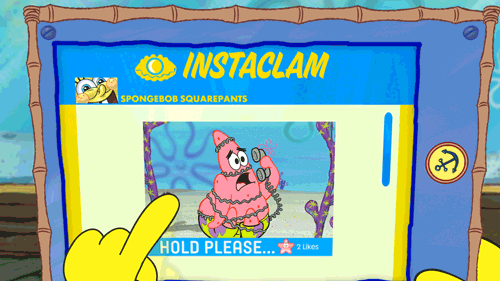
Digital literacy, defined as "the ability to use information and communication technologies to find, evaluate, create, and communicate information," is essential for young people to distinguish between scientific information and falsehoods online. The key word in this definition is "evaluate." Teaching students to apply a scientific approach when researching information and discerning between credible and unreliable sources is a valuable skill for the digital age. It not only aids in academic pursuits but also empowers young individuals to make informed decisions about their health and the world around them.
vaccines, social media, and the spread of misinformation. (2023, October 3). Executive and Continuing Professional Education. https://www.hsph.harvard.edu/ecpe/vaccines-social-media-spread-misinformation/,viewed on 27 October 2023
Jimenez, D., & Jimenez, D. (2021, June 4). Covid-19 vaccines: the role of social media in disinformation. Pharmaceutical Technology. https://www.pharmaceutical-technology.com/features/covid-19-vaccine-disinformation-social-media/,viewed on 27 October 2023
Young people and vaccine hesitancy - what role does social media play? (2021, November 15). British Science Association. https://www.britishscienceassociation.org/blog/young-people-and-vaccine-hesitancy-what-role-does-social-media-play,viewed on 27 October 2023
Mohamed, N. A., Solehan, H. M., Rani, M. D. M., Ithnin, M., & Arujanan, M. (2023). Understanding COVID-19 vaccine hesitancy in Malaysia: Public perception, knowledge, and acceptance. PLOS ONE, 18(4), e0284973. https://doi.org/10.1371/journal.pone.0284973,viewed on 27 October 2023
Vaccinate Your Family. (2023, September 13). Personal stories - Vaccinate your family. https://vaccinateyourfamily.org/why-vaccinate/personal-stories/,viewed on 27 October 2023
Redirect notice. (n.d.). https://www.google.com/url?sa=i&url=https%3A%2F%2Ftwitter.com%2FJKJAVMY%2Fstatus%2F1394096886932545536&psig=AOvVaw1VayABchu3MtLCsl0GTLFn&ust=1698473416244000&source=images&cd=vfe&opi=89978449&ved=0CBMQjhxqFwoTCLDOvNfIlYIDFQAAAAAdAAAAABAE viewed on 27 October 2023
Giphy. (n.d.). GIPHY - Be animated. GIPHY. https://giphy.com/,viewed on 27 Oct 2023
1 note
·
View note
Text
#ConstantGardener (2005), a movie on demand adapted from #JohnleCarré's novel of the same title (2001). The film earned many awards, including an Academy Award for Rachel Weisz for Best Supporting Actress.
#lovestory #romance #crime #conspiracy #government #corporate #corruption #pharmaceuticalmoney #political #betrayal #fiction
The Connecticut Law Tribune and Wikipedia claimed that the book was based on a real-life Pfizer Trovan case that took place in Kano, Nigeria in 1996 although the author denied that his book and the case were drawn from the same case.
In 1996, amid a meningitis outbreak in Northern Nigeria, Pfizer conducted a clinical trial for Trovan, their experimental antibiotic that had never been tested on humans. Tragically, this trial resulted in 11 deaths and permanent disabilities in the participating children. Pfizer had planned to sell Trovan in the US and Europe after the trials on African children. However, its licence was withdrawn in US and Europe because of concern over liver toxicity.
Claim: LeCarre's "The Constant Gardener" Was Based on Pfizer Trovan Case
Wikipedia: https://en.wikipedia.org/wiki/Abdullahi_v._Pfizer,_Inc.
What do Pfizer's 1996 drug trials in Nigeria teach us about vaccine hesitancy?
instagram
#Constant Gardener#john le carré#movie#novel#book#romance#love story#crime#conspiracy#political#betrayal#business#government#corruption#pharmaceutical money#clinical trials#Pfizer#Trovan#Nigeria#vaccine hesitancy#Instagram
0 notes
Quote
My left hand,
wobbly,
struggling to catch up
to the right hand,
nyooming.
Today, I made a decision,
and I stand by it.
These are difficult conversations,
considering the frictions
between you and I,
you (unnamed,
ambiguous,
non-specific).
I’m tired.
Today held fear,
fear of needles,
fear of consequences,
fear of never arriving home
with an rideshare driver that genuinely
would not stop taking his eyes
off the road because he was
bent on showing me evidence
that we shouldn’t need vaccines,
as he drove me home from
from my booster shot.
I felt trapped.
I was scared.
I didn’t want to condone
beliefs that I genuinely don’t think
are "just personal beliefs",
considering how the ensuing actions and behaviours
put others in danger.
But I also began fearing
that I would never reach my destination
if I even showed an ounce of doubt.
I used humour.
You’ve heard of the fight or flight reaction,
or even the fight, flight, freeze reaction,
where the prey’s autonomic nervous system
may encourage them to fight the predator for survival,
run away from the predator for survival,
or freeze, hoping the predator won’t even see you at all.
But in humans,
there’s fawning.
We are social creatures,
and for some,
a survival tactic
is to please someone in danger
so as to hope that they remain
cordial enough until
the next escape opportunity.
I felt trapped.
I used humour.
I responded strategically,
never agreeing,
always diffusing.
0 notes
Text
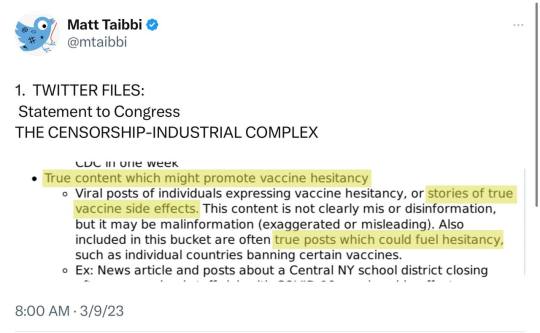
#twitter#twitter files#censorship industrial complex#covid vaccine#covid mrna vaccine#mrna vaccine#covid#vaccine hesitancy#vaccine side effects
0 notes
